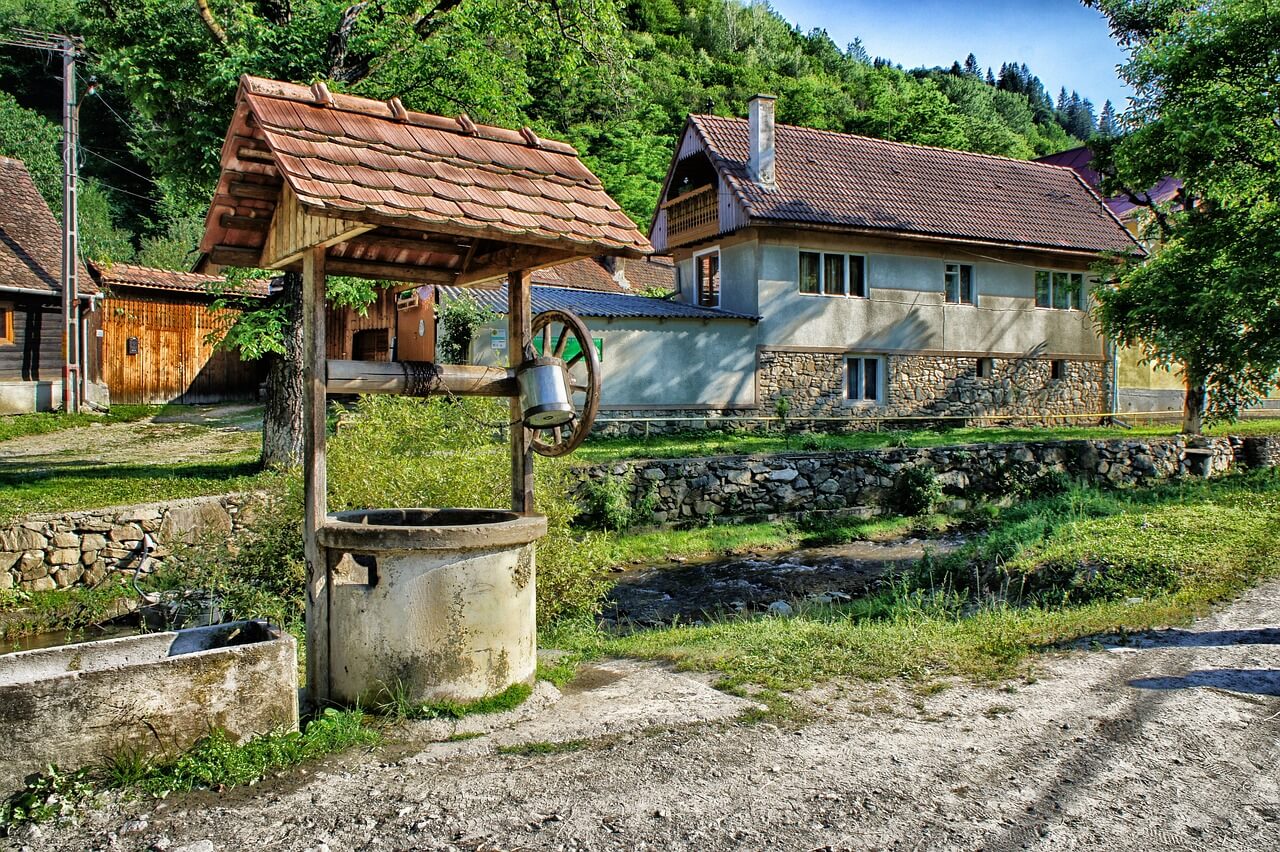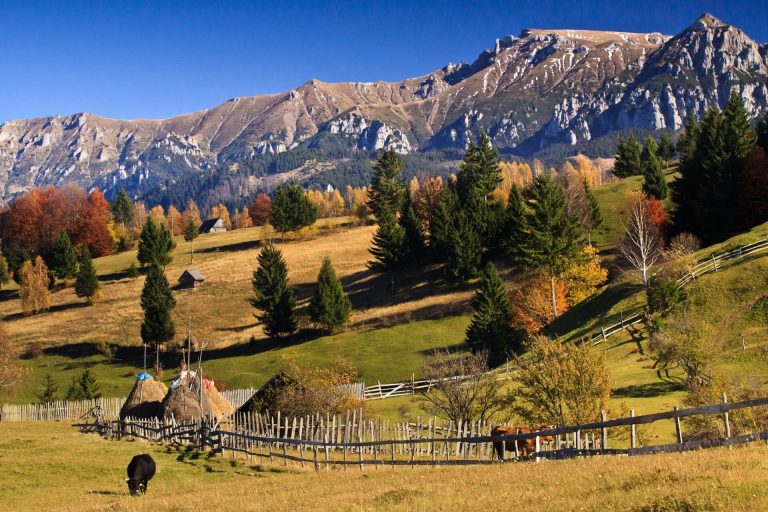Nestled in the Carpathian Mountains, Romania beckons travelers with its diverse range of attractions.
From historic castles and charming villages to bustling cities and stunning natural beauty, this vibrant nation has something for every visitor.
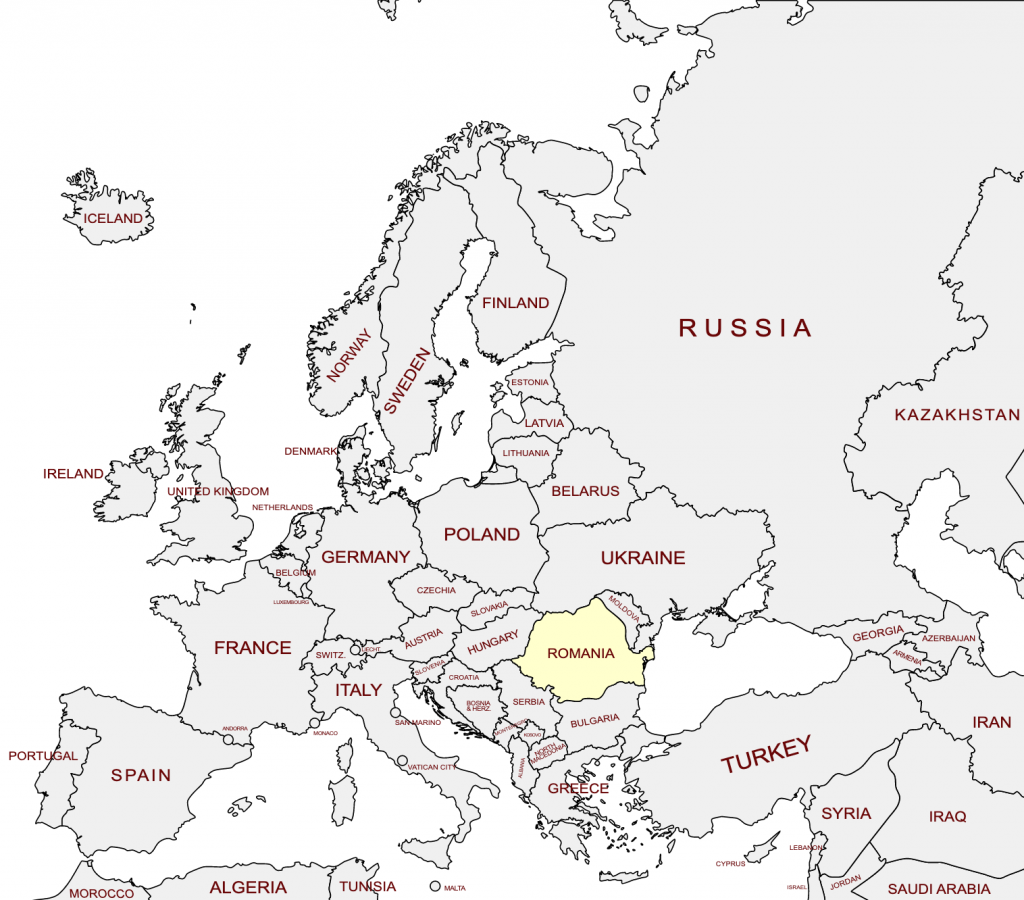
Whether you’re drawn to the rich culture and history or simply seeking relaxation in the breathtaking surroundings, you’ll find an array of activities to enjoy.
In this article, we’ll highlight the top 15 things to do in Romania, so you can begin planning your trip today.
Top 15 things to do in Romania
1. Discover the Charm and Diversity of Bucharest
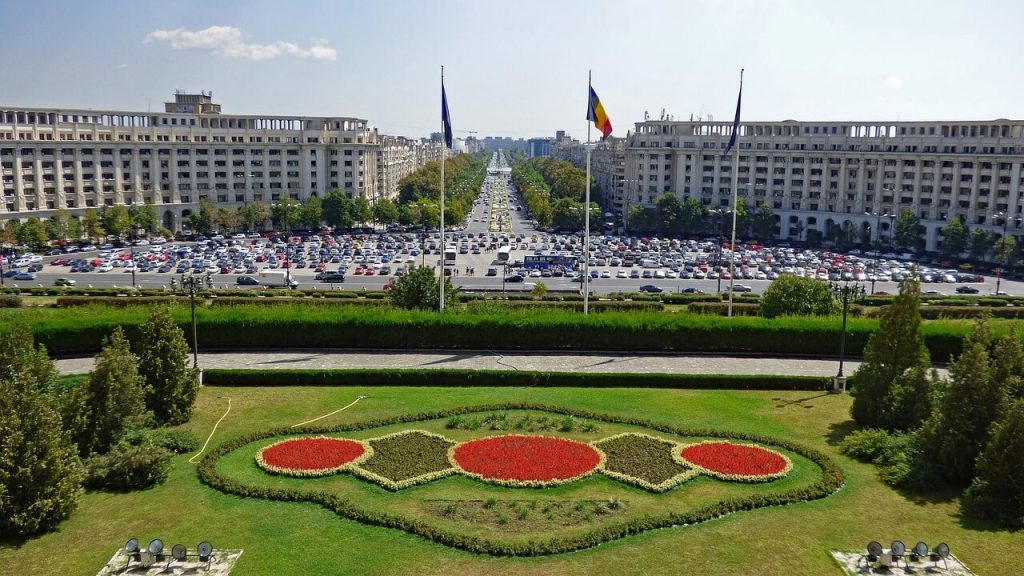
Bucharest, the capital and largest city of Romania, is a vibrant and dynamic destination that offers a wide range of activities and attractions.
It’s also known as “Little Paris” due to its beautiful architecture and charming Old Town with narrow streets and colorful houses.
Visitors can explore the city’s many museums and galleries such as the National Museum of Romanian History and the Museum of Communism to learn about the country’s rich history and culture.
The Palace of Parliament, the second largest administrative building in the world, and the iconic Stavropoleos Church are some of the historic landmarks to visit.
The city is famous for its bustling nightlife, with a variety of trendy bars, clubs, and restaurants offering a wide range of cuisines, traditional Romanian dishes, and international options.
Green spaces such as the Botanical Garden and shopping options, from luxury boutiques to local markets like Obor Market are also available to visitors.
FURTHER READING
2. Visit the legendary Bran Castle (Dracula’s Castle)
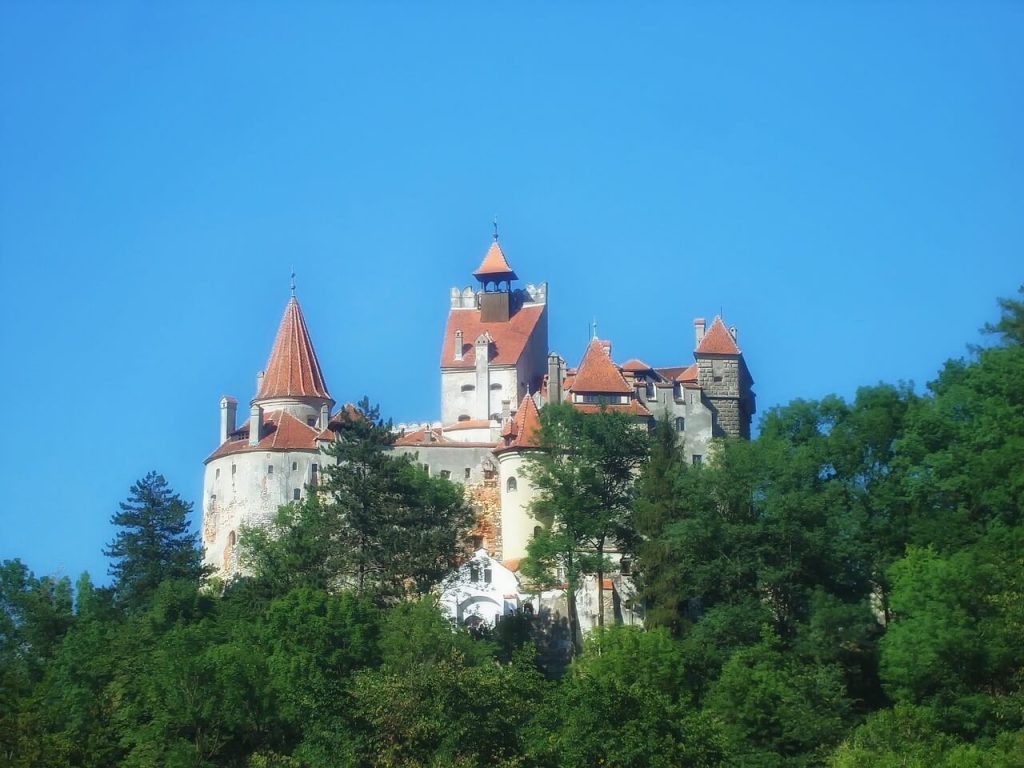
Visiting Romania would not be complete without seeing Bran Castle, famously known as “Dracula’s Castle“.
Located in the charming town of Bran, the castle is nestled in the Carpathian Mountains and dates back to the 14th century. It’s associated with the legend of Vlad the Impaler, which inspired Bram Stoker’s famous novel “Dracula”.
Inside the castle, you can explore its many rooms, each filled with fascinating artifacts and exhibits that tell the castle’s story. You can visit the throne room, the guard room and many other rooms that are beautifully decorated with medieval furniture and paintings.
Additionally, the castle boasts an impressive collection of medieval weapons and armor, as well as a fascinating display of traditional Romanian folk art. You can also explore the castle’s underground tunnels, that were used as storerooms and casements.
The castle also has a beautiful garden with a terrace that offers a panoramic view of the valley and the nearby villages.
3. Explore the beautiful city of Sighisoara
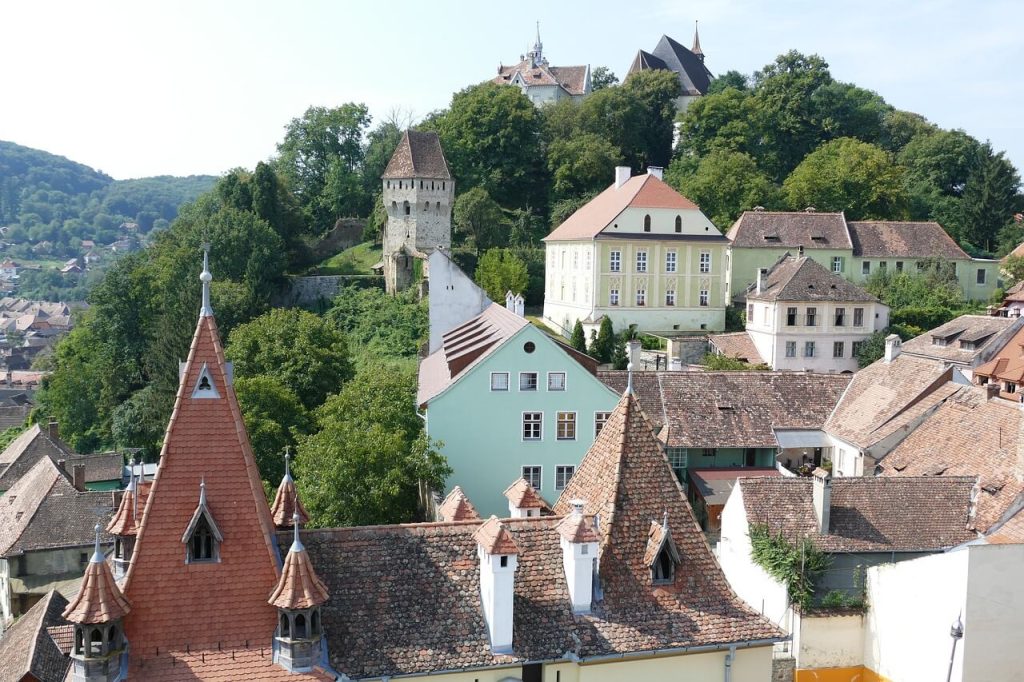
Sighisoara is a quaint medieval town in Romania that’s perfect for history buffs and those looking for a taste of traditional small-town life.
It’s most famous as the birthplace of Vlad the Impaler, the historical figure who inspired Bram Stoker’s Dracula.
The Clock Tower is one of the town’s primary attractions. This 15th-century tower provides breathtaking views of the town’s defended walls. Strolling around the historic citadel, with its nine turrets, covered stairs, and attractive buildings, is a terrific opportunity to absorb the history and spirit of the town.
For a closer look at the town’s past, visit the Vlad Dracul House, the oldest house in Sighisoara, which was once Vlad the Impaler’s birthplace and now serves as a small museum.
4. Visit the Peles Castle
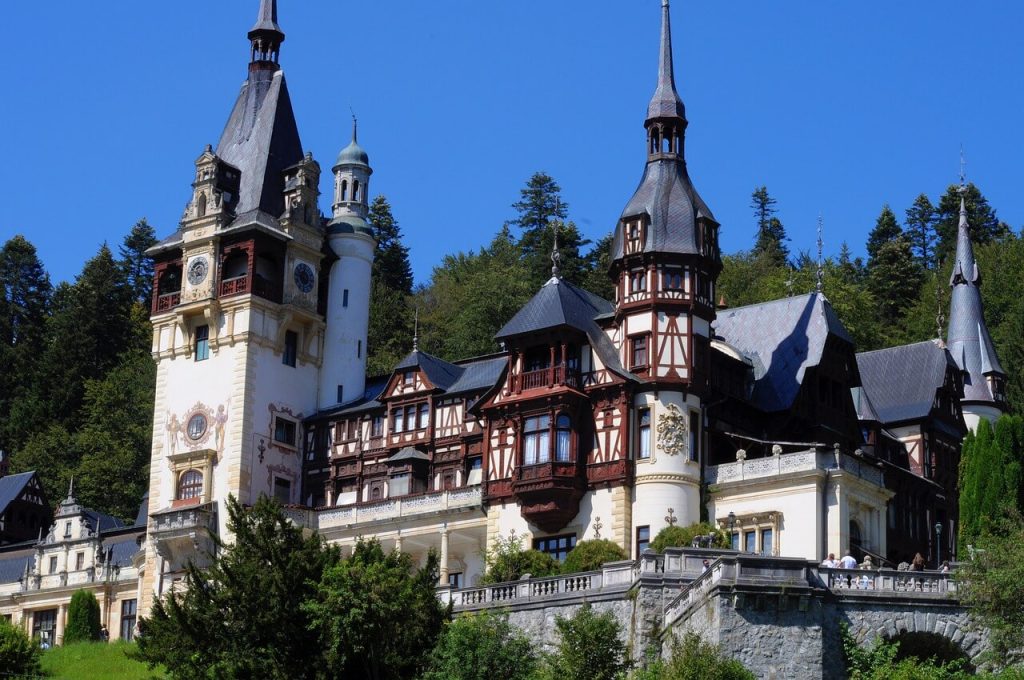
If you’re in Romania’s Carpathian Mountains, don’t miss out on Peles Castle. This beautiful 19th-century castle is a breathtaking combination of German new-renaissance and Gothic revival architecture that will not disappoint.
It was formerly the summer palace of the Romanian royal family and is now available to the public as a museum, providing a look into the lavish lifestyle of Romanian royalty.
Inside the castle, you’ll find 160 rooms, each with its own unique collection of art, furniture and weapons. From intricate wooden carvings to frescoes, stained-glass windows and chandeliers, every room has its own style.
The castle also boasts a small cinema and billiard room, and a rich collection of medieval and renaissance weapons in its armory.
When visiting, make sure to take a stroll in the beautiful gardens surrounding the castle. It’s a great way to enjoy the stunning mountain views.
5. Explore the historic city of Brasov
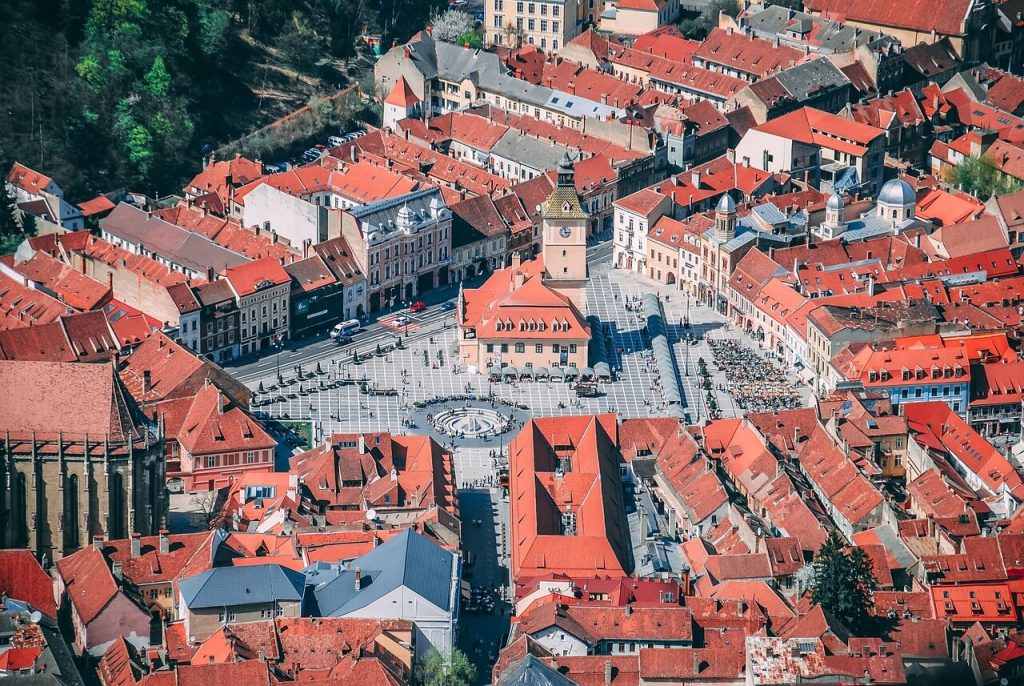
Nestled in the heart of Romania, the city of Brasov serves as a must-see destination for any traveler to the country.
Surrounded by the picturesque Carpathian Mountains, the city’s Old Town is a well-preserved medieval gem, with charming narrow streets, colorful houses, and picturesque squares that take visitors back in time.
A standout attraction in the Old Town is the Black Church, a Gothic structure dating back to the 14th century. It underwent extensive restoration following a fire in 1689 and stands as a testament to the city’s rich history and architecture.
Beyond its historical offerings, Brasov also boasts a lively atmosphere, with a wealth of bars, restaurants, and cafes to choose from. The city’s main square, Piata Sfatului, serves as a prime spot for observing local life and absorbing the culture.
The cable car ride to the summit of Mt. Tâmpa will provide you with panoramic views of the city, a perfect way to take in the city’s and the surroundings natural beauty.
6. Visit the Merry Cemetery
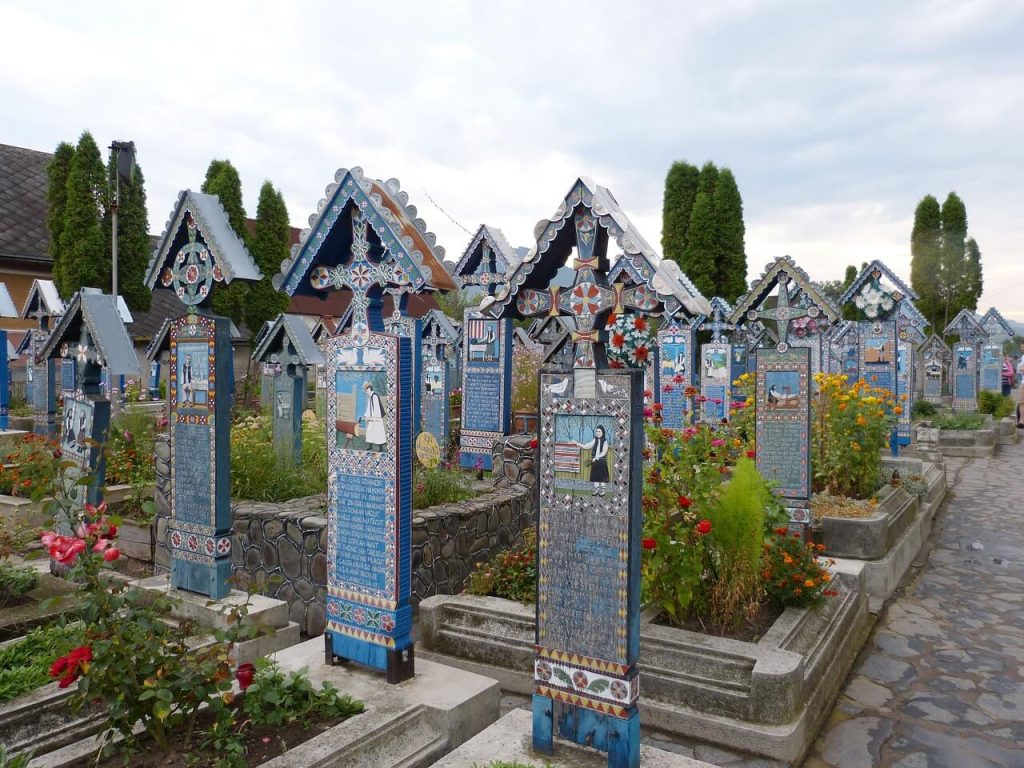
The Merry Cemetery, located in the small village of Săpânța in the Maramures region of Romania, is a unique and colorful cemetery that stands out from the traditional somber and solemn graveyards.
Instead of traditional headstones and grave markers, the cemetery features elaborate wooden crosses adorned with colorful paintings depicting the deceased’s life and even their sense of humor. The inscriptions on the crosses are written in a lighthearted and often humorous tone, providing a different perspective on death and eternity.
The Merry Cemetery began in the 1930s by a local carpenter, Stan Ion Patras and now it includes more than 800 crosses. It’s a fascinating spot to visit, to learn about local culture and tradition in a different way.
Visitors can stroll through the cemetery, admiring the colorful crosses and reading the entertaining inscriptions which can range from a simple list of the deceased’s life story to humorous anecdotes about their lives.
7. Visit the painted monasteries of Bucovina
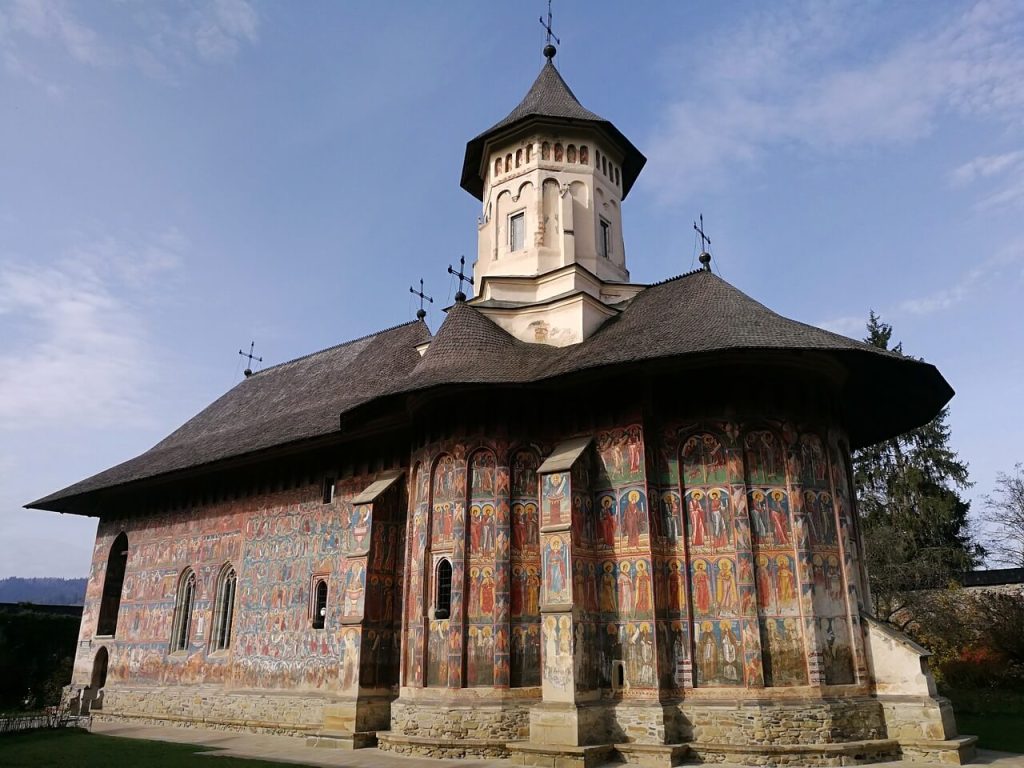
The painted monasteries of Bucovina serve as a singular and incomparable glimpse into the art and architecture of Eastern Europe.
The monasteries are embedded in the idyllic northern reaches of Romania and dubbed the “Painted Monasteries of Northern Moldavia”. They hold UNESCO World Heritage Site status and are renowned for the exceptional frescoes that adorn the exterior and interior walls of the buildings.
The frescoes illustrate biblical scenes and the biographies of saints. They are considered among the most prominent specimens of Byzantine art in Europe.
One of the most famous of the painted monasteries is the Voronet Monastery, also known as the “Sistine Chapel of the East”. The name comes after the deep blue color used on the exterior walls.
Other worth-visiting monasteries include the Humor Monastery, known for its striking shades of red and yellow, and the Sucevita Monastery, which features intricate geometric patterns and a colorful representation of the Last Judgment.
8. Take a trip to the Black Sea Coast
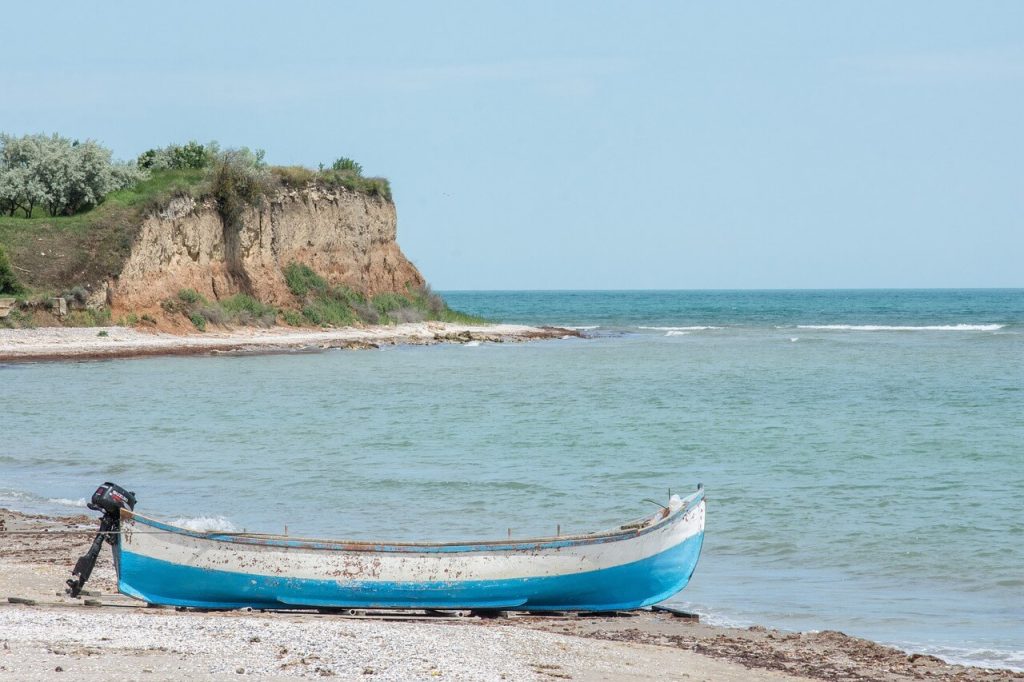
The Black Sea Coast in Romania is a prime destination for those looking to soak up some sun, sea, and sand.
The coast stretches for over 200 kilometers and offers a variety of activities and attractions. The beaches boast wide stretches of golden sand and crystal-clear waters, perfect for swimming, sunbathing and water sports.
The historic city of Constanta, also known as Tomis, is one of the highlights of the Black Sea Coast.
It is Romania’s oldest continuously inhabited city and home to the spectacular Roman Mosaic as well as the National History and Archeology Museum. You will find here a vibrant atmosphere, plenty of bars, restaurants, and nightlife options.
Another must-see spot along the Black Sea Coast is the Danube Delta, which is a UNESCO World Heritage Site and the second-largest river delta in Europe. Here, you’ll discover a diverse array of flora and fauna, including over 300 species of birds.
Go on a boat tour to explore the delta and keep your eyes peeled for wildlife such as pelicans, cormorants and swans.
9. Explore the charming village of Viscri
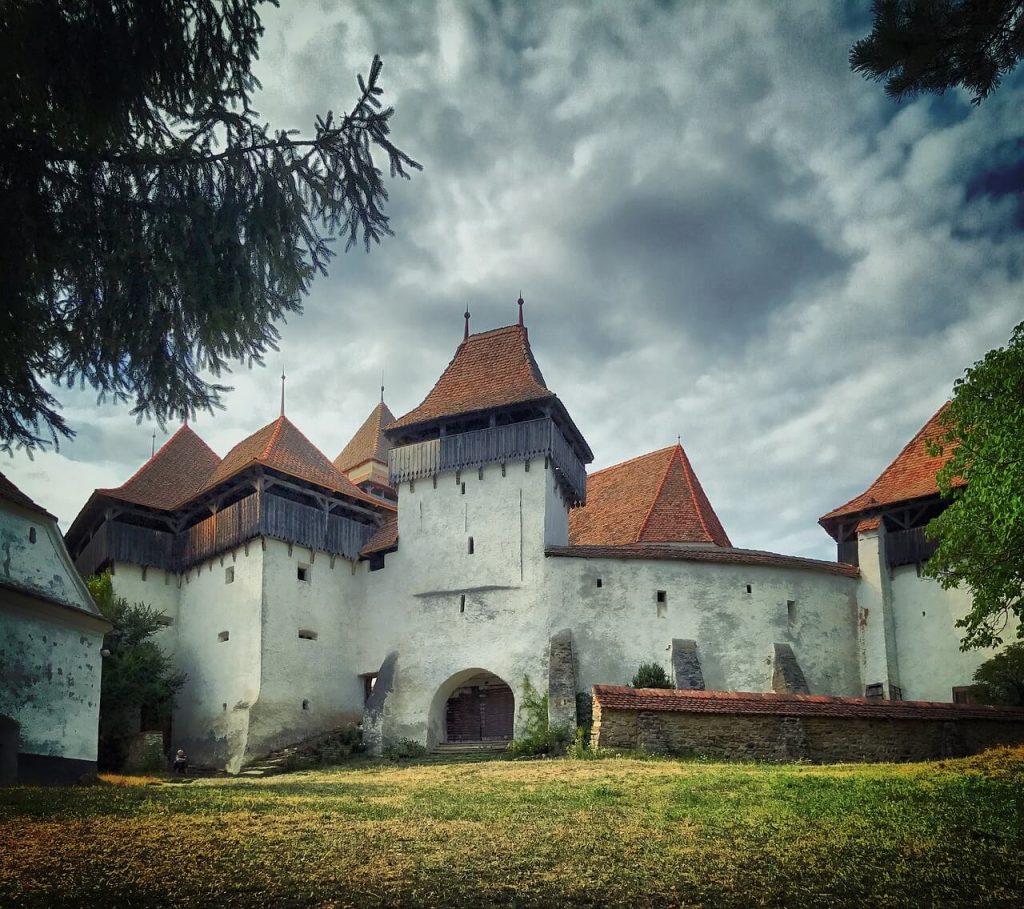
Viscri is a charming fortified town in the county of Brasov that gives a look into traditional rural life and heritage buildings.
The village is famous for its well-preserved fortified church, which dates back to the 12th century and is designated as a UNESCO World Heritage Site. This magnificent church is an excellent example of Transylvanian Saxon fortified churches, with unique paintings and a stunning steeple.
The traditional rural way of life is one of the main draws of Viscri. Visitors can meander through the village’s cobbled streets and take in the well-preserved colorful houses, while witnessing traditional crafts such as pottery, weaving, and bread making.
There’s also the opportunity to observe local farmers tending to their animals, and learn about the village’s rich agricultural history.
10. Take a walk through the Botanical Garden
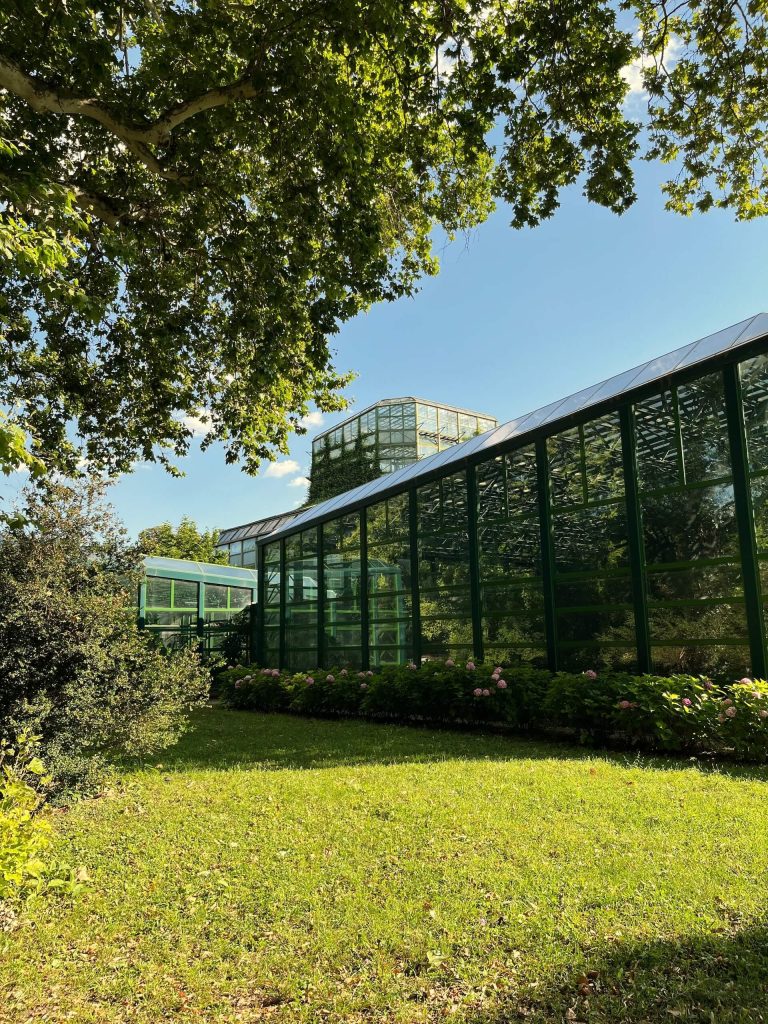
The Bucharest Botanical Garden, founded in 1891, is a green sanctuary in the middle of the city. It is one of Romania’s oldest and most important botanical gardens, spanning over 17 hectares and boasting a wide variety of flora.
It has over 10,000 kinds of plants, trees, and flowers grouped in sections such as the arboretum, rock garden, Japanese garden, and tropical greenhouse.
You can stroll around the garden’s many areas, which include greenhouses, rock gardens, water lily ponds, and lawns. There is also a Japanese Garden, a lake, and a lake island.
Aside from its horticultural splendor, the Botanical Garden also serves as a research and conservation center. Several research institutes, including the Institute of Biological Research, the Institute of Botanical Research, and the Institute of Medical Research, are located in the garden.
Visitors can observe research in progress, where scientists are working on many projects, such as conservation of endangered species and the study of medicinal plants.
11. Visit the Palace of the Parliament
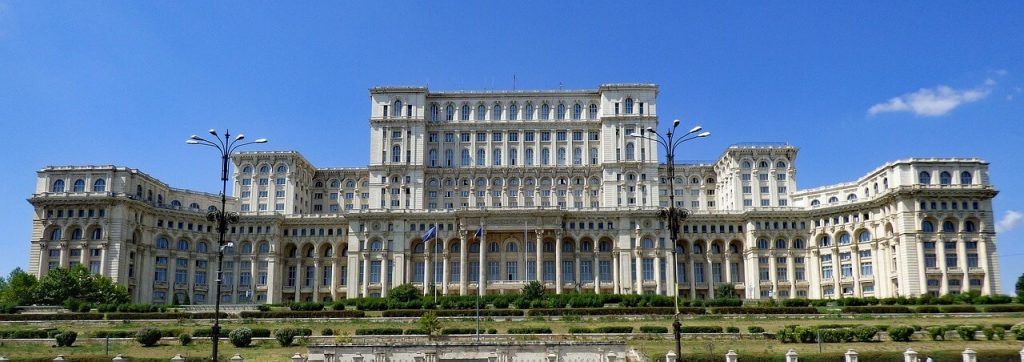
The Palace of the Parliament in Bucharest, also known as the People’s House, is one of the most iconic and significant buildings in Romania.
It’s the former home of the Romanian government and it was built during the 1980s on the orders of communist dictator Nicolae Ceaușescu. With a total area of 365,000 square meters it’s the second-largest administrative building in the world after the Pentagon and it is considered the largest civilian building in the world.
The palace features 12 stories, with 1,100 rooms, including a plenary hall, a grand hall, a gallery, a theater, and an opera. Its construction, spanning over 13 years, employed the use of a wide variety of materials and labor sourced from all over Romania.
A true testament to opulence and grandeur, the palace is adorned with marble, gold leaf, and crystal chandeliers, making it one of the most luxourious buildings in the country.
You can take guided tours of the palace, which will take you through some of the most impressive parts of the building, including the plenary hall, the grand hall, and the grand corridor.
12. Take a scenic drive through Transfagarasan Highway
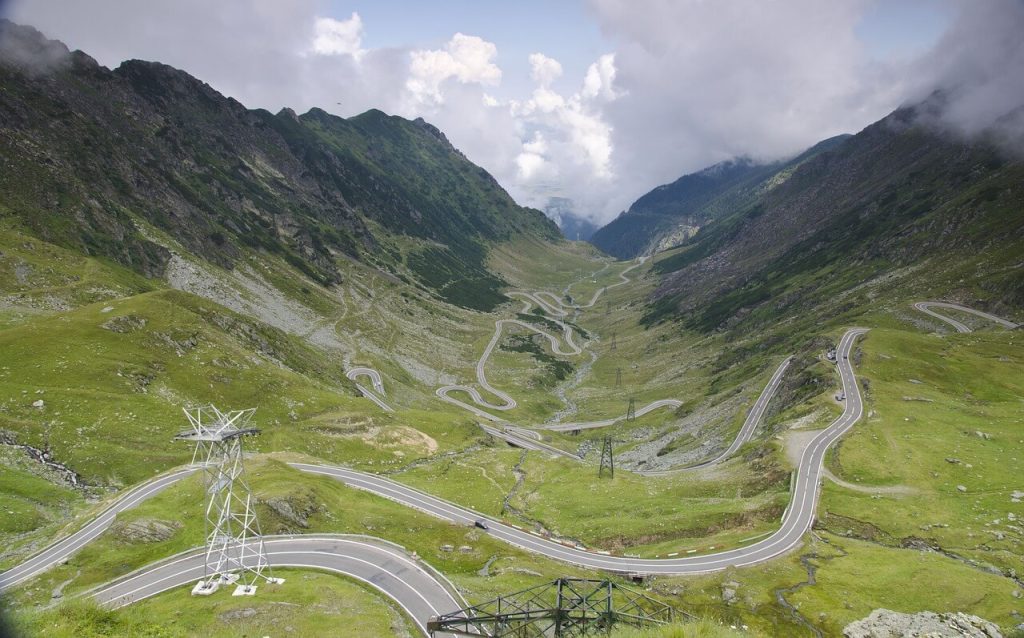
The Transfagarasan Highway, also known as “the road to the clouds“, stretches for over 150km through the Carpathian Mountains, offering incredible views of the surrounding landscape.
The highway passes through the Fagaras Mountains, the highest mountain range in Romania and it connects the historic regions of Transylvania and Wallachia.
The road was built during the 1970s on the orders of the former dictator Nicolae Ceaușescu, and was intended as a strategic military route. Today it serves as one of the most spectacular drives in Romania. The road is known for its steep inclines, hairpin turns and its incredible views of the surrounding mountains, valleys, and forests.
The Transfagarasan Highway is open from June to October, depending on the weather conditions. It offers several lovely vistas along the way where travelers may stop and take in the breathtaking scenery.
Several historical landmarks and traditional villages may be found along the way, providing an opportunity to learn about the local culture and history.
13. Enjoy the lovely city of Sibiu
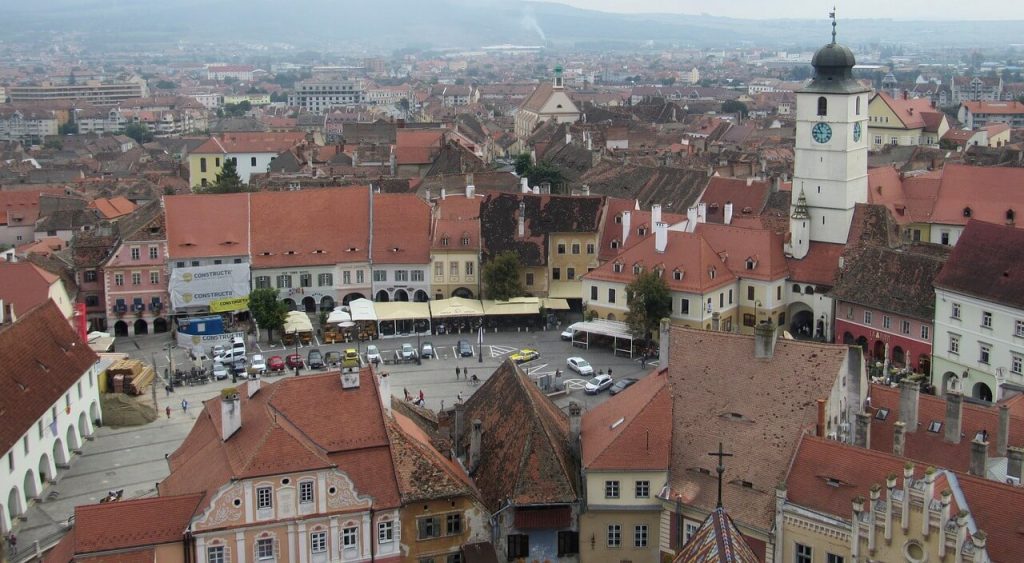
Sibiu is a beautiful medieval city in Romania that is well worth a visit for history and culture aficionados.
The city is known for its well-preserved medieval architecture, particularly the UNESCO World Heritage Site Old Town. The Old Town consists of a network of tiny cobblestone alleyways, colorful homes, and scenic squares that provide an insight into the city’s past.
The Grand Square, Sibiu’s biggest square, is one of the city’s primary attractions. It is surrounded by gorgeous baroque buildings and serves as the old town’s center.
Visitors may also visit the city’s fortified walls and towers, including the Council Tower, which provides panoramic views of the city.
The Brukenthal National Museum, housed in a stunning baroque palace, is another must-see attraction. It exhibits a collection of Romanian and European art.
14. Go to the Monastery of Horezu
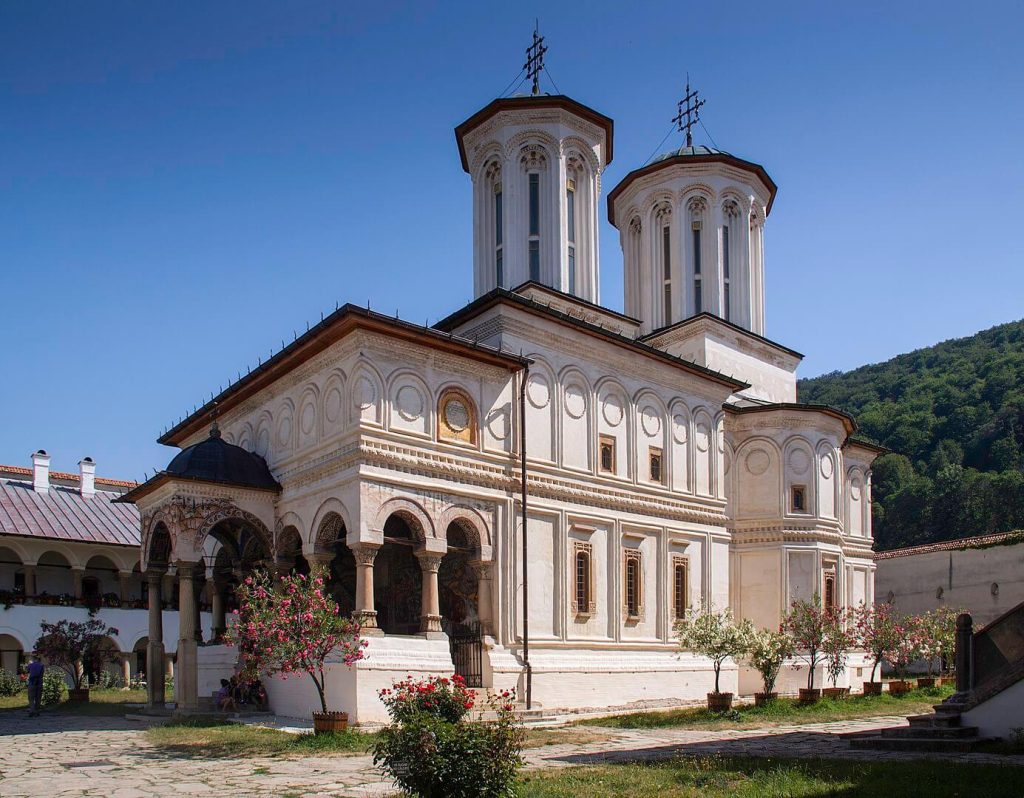
(Photo by Alexandru Baboș – Own work, CC BY-SA 3.0 ro, https://commons.wikimedia.org/w/index.php?curid=21160569)
The Monastery of Horezu is a 17th-century religious complex located in the Horezu town, in the Valcea County of Romania.
It is one of the most important cultural and architectural landmarks in the country and it is known for its well-preserved frescoes and painted ceramics. The Monastery became a UNESCO World Heritage Site in 1993.
The Monastery of Horezu is a 17th-century architectural treasure that showcases the unique “Brancovan style” of architecture, a combination of Byzantine, Gothic, and Renaissance elements.
Visitors can explore the complex, featuring a grand church, a bell tower and several monks’ quarters, all adorned with intricate frescoes and painted decorations. The frescoes in the church, masterfully painted by local artist Toma of Suceava, are considered a prime example of the Brancovan style and depict scenes from the Bible and the lives of saints.
The Monastery is also a popular pilgrimage destination, and it still has an active monastic community. Visitors are welcome to attend services and see the Monastery’s sacred items, which include an exquisite silver reliquary and magnificent murals.
The Monastery also has a small museum that displays some of the Monastery’s treasures, including manuscripts, books, and other religious artifacts.
15. Visit the painted churches of Maramures
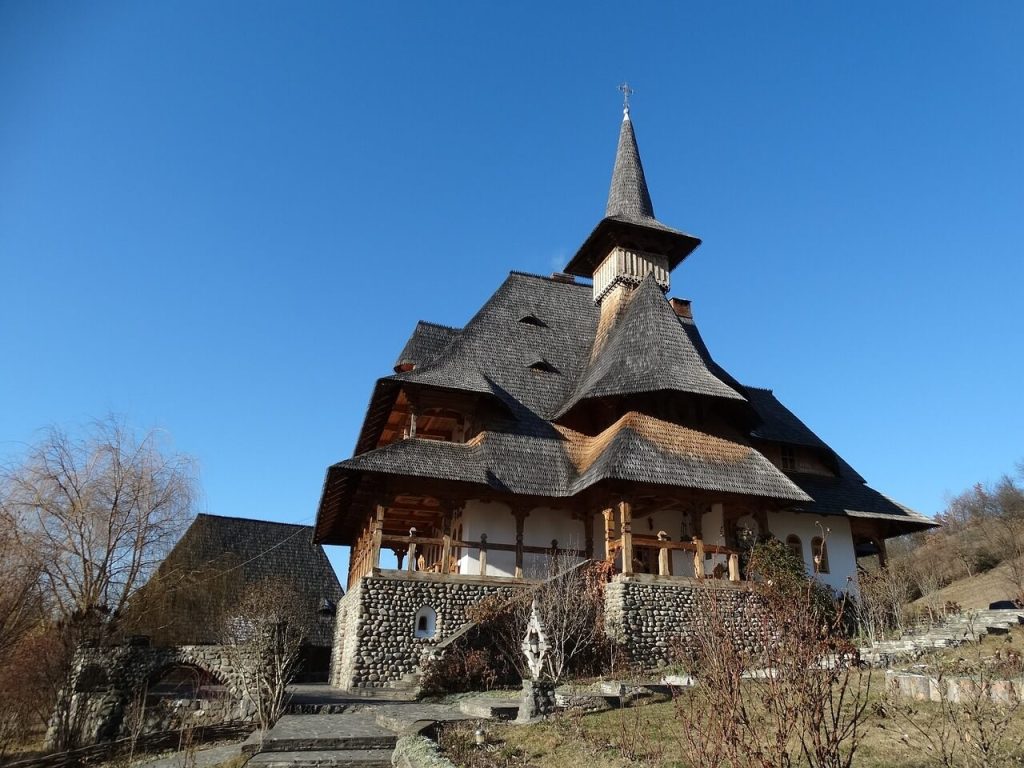
The painted churches of Maramures are a group of wooden churches located in the Maramures region of Romania, known for their intricate and colorful frescoes. These frescoes are considered masterpieces of Byzantine art, depicting religious scenes, symbols and motifs.
The most famous of these churches include the Church of the Presentation of the Virgin in the Temple in Surdesti, the Church of St. Nicholas in Budesti, and the Church of the Holy Archangels in Desesti.
These wooden churches are an essential part of the Maramures region’s cultural legacy, and they are a monument to the region’s carpenters and painters’ talent and workmanship. They are also a fine example of the area’s traditional rural architecture, and the frescoes are regarded as among of Romania’s most remarkable examples of religious art.
Visiting these churches is an excellent chance to learn about the region’s history and culture while also admiring the beauty of these architectural treasures.
See more guides about Romania
